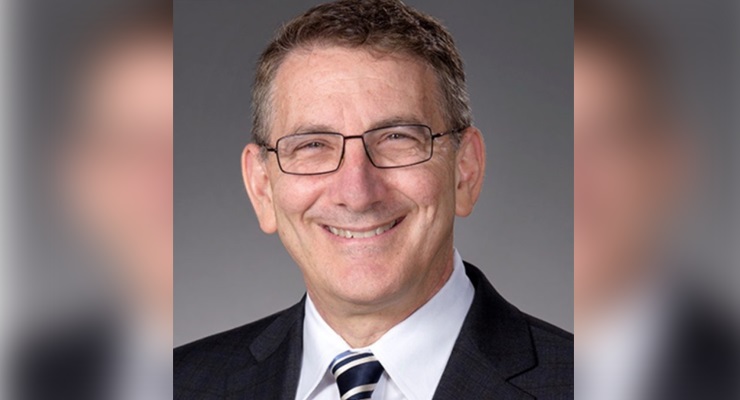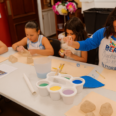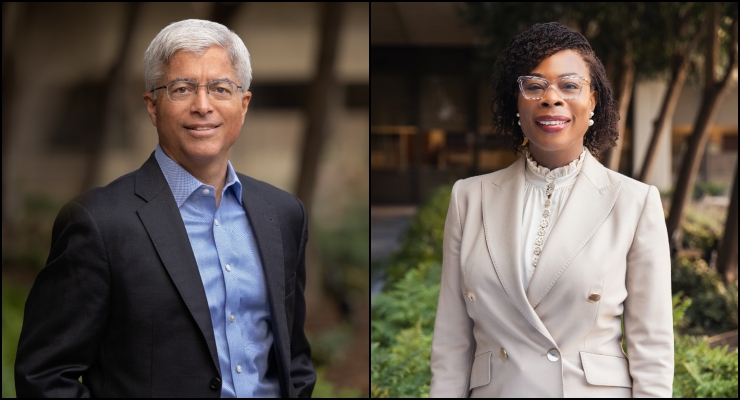
Two years after its founding, Kaiser Permanente’s medical school has been recognized as the sixth most diverse medical school in the nation – and the second most diverse in California.
Dr. Mark Schuster, Founding Dean and CEO of the Kaiser Permanente Bernard J. Tyson School of Medicine in Pasadena, spoke to Pasadena Now about actively working towards diversity, his goals for the school, and its comprehensive curriculum which includes three pillars of medical education: biomedical science, clinical science and health system science.
Numbers provided by the school for their class of 2024 indicate that 36 percent of the student body is Asian, 14 percent is Black or African American, and 22 percent is Latino/a/x.
Dr. Schuster emphasized that equity, inclusion, and diversity is a big part of the Kaiser Permanente curriculum, which has been designed from the outset with an inclusivity lens.
“It’s laid out looking at it through that lens, and then there’s a review after it’s complete to make sure to the best of our ability that it’s working well, that our cases give a broad array of representation of people of many different backgrounds, and that there isn’t bias that we can detect built into the cases,” he said. “We have sessions on bias and how to mitigate it, we have sessions on the history of racism in American medicine on microaggressions and genomics and race, and a number of topics that are specific sessions to make sure our students are learning about equity and inclusivity.”
Unique Curriculum
Dr. Schuster said the Kaiser Permanente curriculum is case-based and in small groups. In the first year, students spend time in small groups of eight students with two faculty – a biomedical scientist and a physician – and we don’t have a separate biochemistry class and then a separate anatomy class. We integrate everything.”
Students go through the different organ systems in this integrated way, he added.
“So when you are learning about the cardiovascular system, you’re learning about the biochemistry and physiology of the heart at the same time that you’re learning about preventing, diagnosing and treating heart disease,” he said. “At the same time, we’re also teaching you about the quality of care, so that we teach that women receive worse quality of care for a heart attack or myocardial infarction than men, and people of color receive worse quality of care than people who are white. We’re teaching all of this at the same time, so that it all makes sense to students and they see the relevance of all that they’re learning.”
Right in the third week of school, students are thrust into the clinical setting, where they’re taught the basics of taking patient history and doing a physical exam. In the first year, students spend half-day a week in family medicine or internal medicine clinical setting with the same physician all year.
In the second year, students go through what Schuster calls a “longitudinal integrated clerkship,” added into the clinical experience that students are exposed to a half-day a week all year. In these longitudinal integrated clerkships, students learn more about emergency medicine, obstetrics, gynecology, pediatric psychiatry, and surgery in a more realistic setting.
“By having the clinical experience that starts in the first year, they’re seeing the relevance of what they’re learning in the classroom, and when they’re in the clinic, they go back to the classroom with questions,” Dr. Schuster said. “And so it’s really helpful to see why biochemistry matters and why histology and anatomy and all the other fields matter. They can seem kind of disconnected from becoming a physician, so we want our students to see why all that material’s important and they can see it by being in the clinic at the same time.”
Dr. Schuster said students are oriented about team-based care early on at Kaiser Permanente, where they work with nurses, social workers, pharmacists and others. The physician and other staff know what the student is learning in the classroom and try to have patients who are relevant to what the student is learning.
“They also know where the student is strongest at and where the student might need extra practice in certain areas of history or physical, and they can guide the student accordingly in the clinical setting,” he said.
Two weeks ago, the School of Medicine welcomed its third class of medical students. They came into Kaiser Permanente from a recruitment process that involves visiting various colleges and conferring with potential applicants.
“There are a lot of convening conferences put together, particularly for students who are from groups that are underrepresented in medicine, and those are students who are Black, Latinx, indigenous, and Pacific Islander, or have those backgrounds,” Dr. Schuster said.
“We make a special effort to reach out to them, but we also went to colleges around the country, and then they applied and we had the highest ratio of the number of applications for the number of spots in the country.”
Tuition Waiver
In early 2019, Kaiser Permanente announced it was waiving tuition fees for the first five classes of students, up to 2024. Those classes will only be responsible for their living expenses and an established student registration deposit.
The school also offered to provide substantial grant aid to offset living expenses for students with demonstrated financial need.
“We know that medical school is expensive, and that debt can impact students’ future career choices as well as the type or location of their clinical practice,” the school says on its website. “Our hope is to minimize those concerns for our students.”
Somehow, the fact that tuition is free for the first five classes may be helping the medical school in more ways than they expected. The first class, Dr. Schuster acknowledges, has provided very helpful student feedback that is helping Kaiser Permanente improve its curriculum and make the school better. The school very actively solicits student suggestions from the other two classes that are on board, and will continue to do so when the next class begins next year.
“Our mindset is that even in 20 years, we’ll still be learning from our students. They will still be telling us how to make it better because the generations change in how they learn and how they use technology,” he said. “We’re going to be keeping up on our own, but our students will be among our best educators in how we can keep improving. Kaiser Permanente is known for its emphasis on continuous quality improvement, always looking to improve. And we have that same mindset at our school and our students are a key part of that.”


















